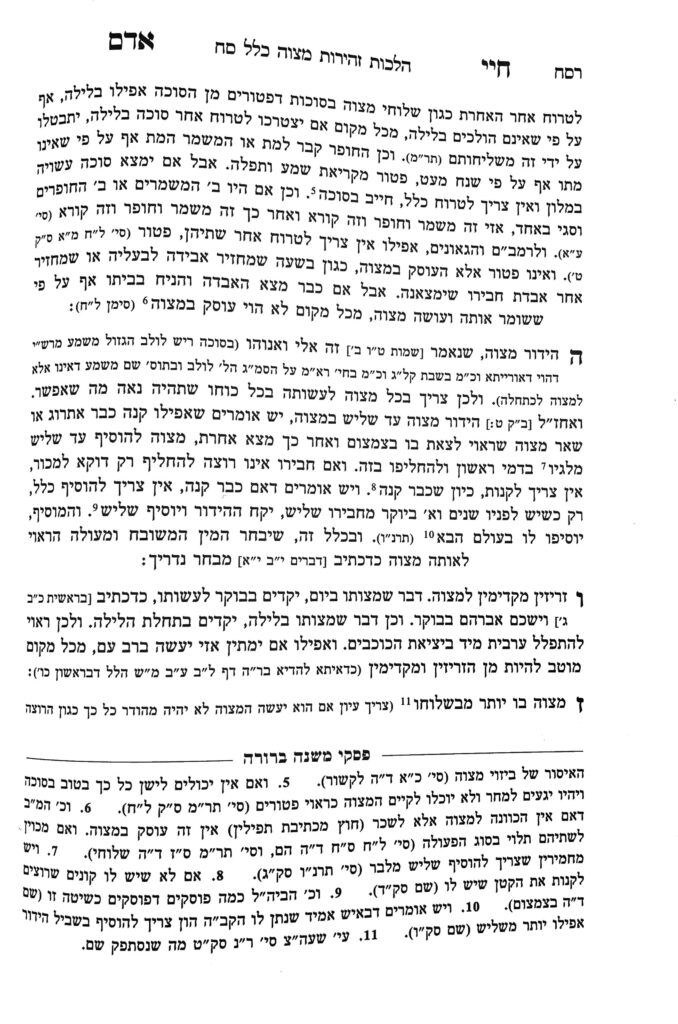We are continuing in siman 5, discussing hiddur mitzvah.
In Bava Kamma 9b, Rav Zeira says that hiddur mitzvah requires up to one third. There is a machlokes rishonim how to understand the Gemara. Tosfos says that Rav Zeira refers to a case such as where one bought an esrog and then finds another esrog which is one third bigger. According to Tosfos, this halacha specifically refers to the size of the item. The Mishnah Berurah extends Rav Zeira to any other mitzvah, such as buying a sefer torah which is ופ אם one third larger than another sefer torah.
Rashi understands that Rav Zeira refers to a case in which one has two mitzvah items available for purchase, where one is nicer than the other. A person should buy the nicer one, as long as it is within a third of the cost of what they were originally planning to spend. A person who goes beyond one third is going above and beyond, and Hashem will pay them back in this world and in the next world. Paying less than one third more than their original purchase intention is a chiyuv based on this concept.
For example, one is purchasing a sefer torah and plans to spend $50,000. If the sofer shows them a nicer sefer torah for $60,000, they would be chayav to purchase it. It is important to note that the Gemara’s presents two methods for calculating the additional third. One is not based on the original price one expected to pay, but based on the entire amount they would pay at the end. In our example, if one was planning to pay $50,000, $75,000 would include a third of the amount which they would pay at the end, so that would be their total. Essentially, one takes their original price and divides it in half. The other option is the standard way to calculate one third. The Chayei Adam will discuss this calculation further.
According to Rashi, if a person already purchased a mitzvah item, they would not be chayav to sell it to purchase a nicer one. Rashi only applies before a person has purchased an item where there are multiple options available.
The Chayei Adam follows Tosfos’s approach, that hiddur mitzvah refers to buying a larger mitzvah item where the cost is up to one third more than a smaller equivalent. It is interesting to note however, that while Tosfos refers to the third as a larger size, i.e. 1/3 larger, the Chayei Adam understands it to be 1/3 more expensive. We will discuss this opinion further in the next shiur, be’ezras Hashem.
Summary
The Chayei Adam understands that hiddur mitzvah refers to buying a larger mitzvah item, where the cost is up to one third more than a smaller equivalent.



